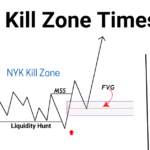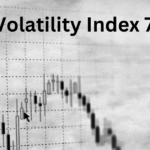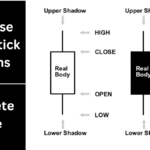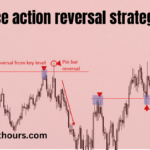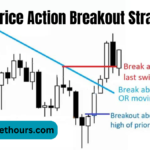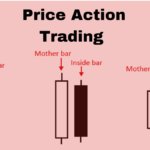Price action reversal strategies are key techniques that traders use to predict when the price of an asset is about to change direction. These strategies are especially useful for spotting potential reversals, or changes in direction, whether the market is trending, moving sideways, or even going against the main trend. By recognizing these reversal signals, traders can enter and exit trades at the right time, which can lead to better profit opportunities and reduced risk.
Understanding Price Action Reversals
A price action reversal strategy involves identifying patterns in price movements that suggest a change in direction is likely to happen soon. One common example is the pin bar reversal signal. This is when the price forms a specific type of candlestick that looks like a pin, indicating that the market may be about to reverse. For instance, if the market has been moving up, a pin bar might suggest that the price is about to fall.
It’s important to note that price action reversal strategies are not just for trading against the trend. Many traders assume that reversal signals are only for counter-trend trading, but that’s not true. Reversal signals can also be used to trade in the direction of the main trend after a retrace, which is when the price temporarily moves against the trend before continuing in its original direction.

Trading Reversal Signals with the Trend
When the market is trending, one effective way to use price action reversal strategies is by looking for signals that appear after a retrace to a key level within that trend. For example, if the market is in an uptrend but then pulls back to a support level, a reversal signal at this level can provide a great opportunity to enter a trade in line with the overall trend.
A common mistake among traders is to confuse a retrace with a trend reversal. Just because the price moves against the trend for a short time doesn’t mean the trend has ended. Trends can last for a long time, with many retraces along the way. The key is to wait for clear price action signals before deciding whether the trend is truly reversing.
One example of this strategy in action is when the market is in an uptrend, and the price retraces back to a support level. If a reversal pattern like a fakey pin bar combo appears at this support, it can be a strong signal to re-enter the uptrend from a favorable point, often referred to as ‘value’ or support.
Reversal Signals Within a Trend
Another example of using price action reversal strategies within a trend is when the market is in an uptrend, but the price temporarily moves down to a previous support level. If a pin bar and inside bar combo form at this level, it can signal that the price is ready to reverse back into the uptrend. This is considered a high-probability trade setup because it aligns with the overall trend.
Traders can also use inside bar patterns as reversal signals within a trend. An inside bar forms when the price consolidates within the range of the previous bar, indicating a potential reversal. For example, in an uptrend, if the price pulls back to a support level and forms an inside bar, it can signal a continuation of the uptrend after the temporary retrace.
Trading Counter-Trend Reversal Signals
Price action reversal strategies can also be used to trade against the trend, although this approach requires more experience and skill. When trading counter-trend, the most important thing to consider is whether the reversal signal forms at a key resistance or support level. If the price forms a clear reversal pattern at one of these levels, it can indicate a strong potential for the market to reverse direction.
For instance, a bearish pin bar that forms at a key resistance level can be a powerful signal that the price is about to drop, even if the overall trend has been upward. These types of reversal signals are particularly strong when they occur in higher timeframes, such as in the daily chart.
Another example of a counter-trend reversal signal is the fakey pattern, where the price briefly breaks out above a resistance level and then quickly reverses. This pattern often includes a pin bar that clearly shows the rejection of the breakout, indicating that the market is likely to move in the opposite direction.
Tips for Using Price Action Reversal Strategies
- Versatility: Price action reversal strategies can be used in various market conditions, including trending, counter-trending, and ranging markets. They are flexible tools that adapt to different trading scenarios.
- Best Timeframes: The daily and 4-hour chart are particularly effective for spotting pin bar reversals and fakey patterns. These timeframes provide clear signals that are easier to trade than those on lower timeframes.
- Key Turning Points: Reversal signals often mark significant turning points in the market, signaling either a change in the current trend or the start of a new trend.
- Trading with the Trend: When trading reversal signals with the trend, look for them after a retrace to a key support or resistance level. This approach helps ensure that you are trading in line with the dominant market trend, which typically leads to better results.

